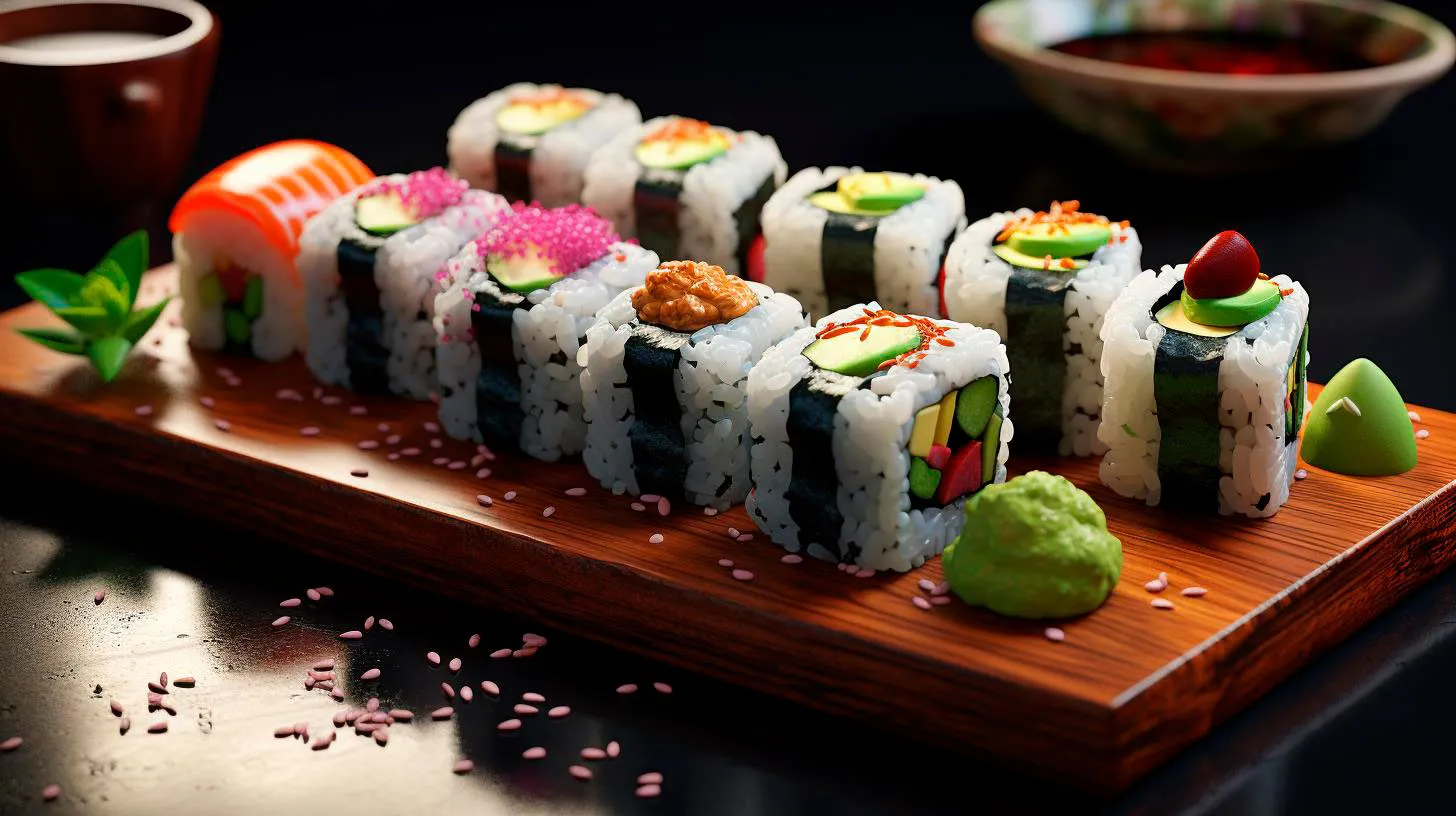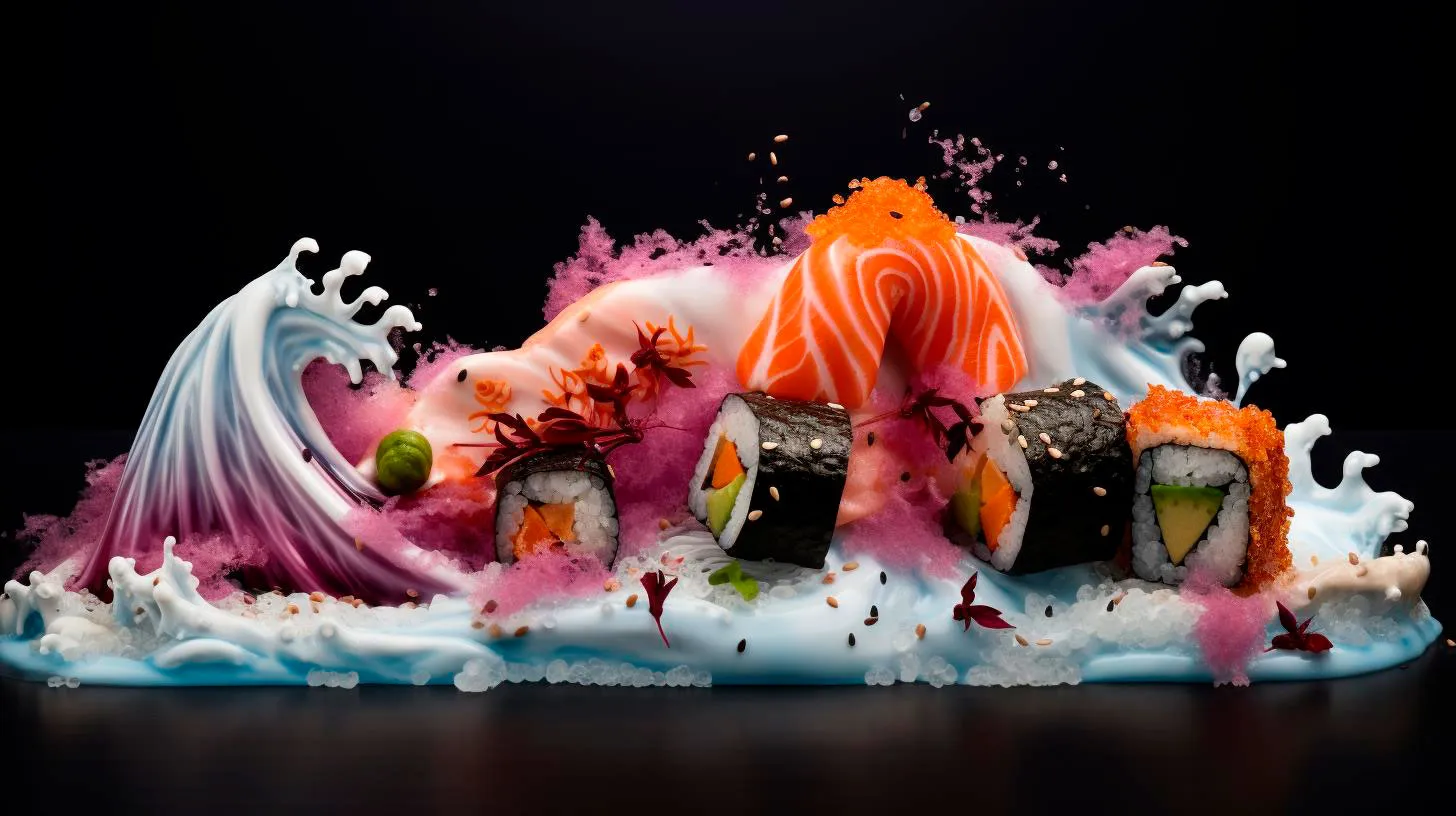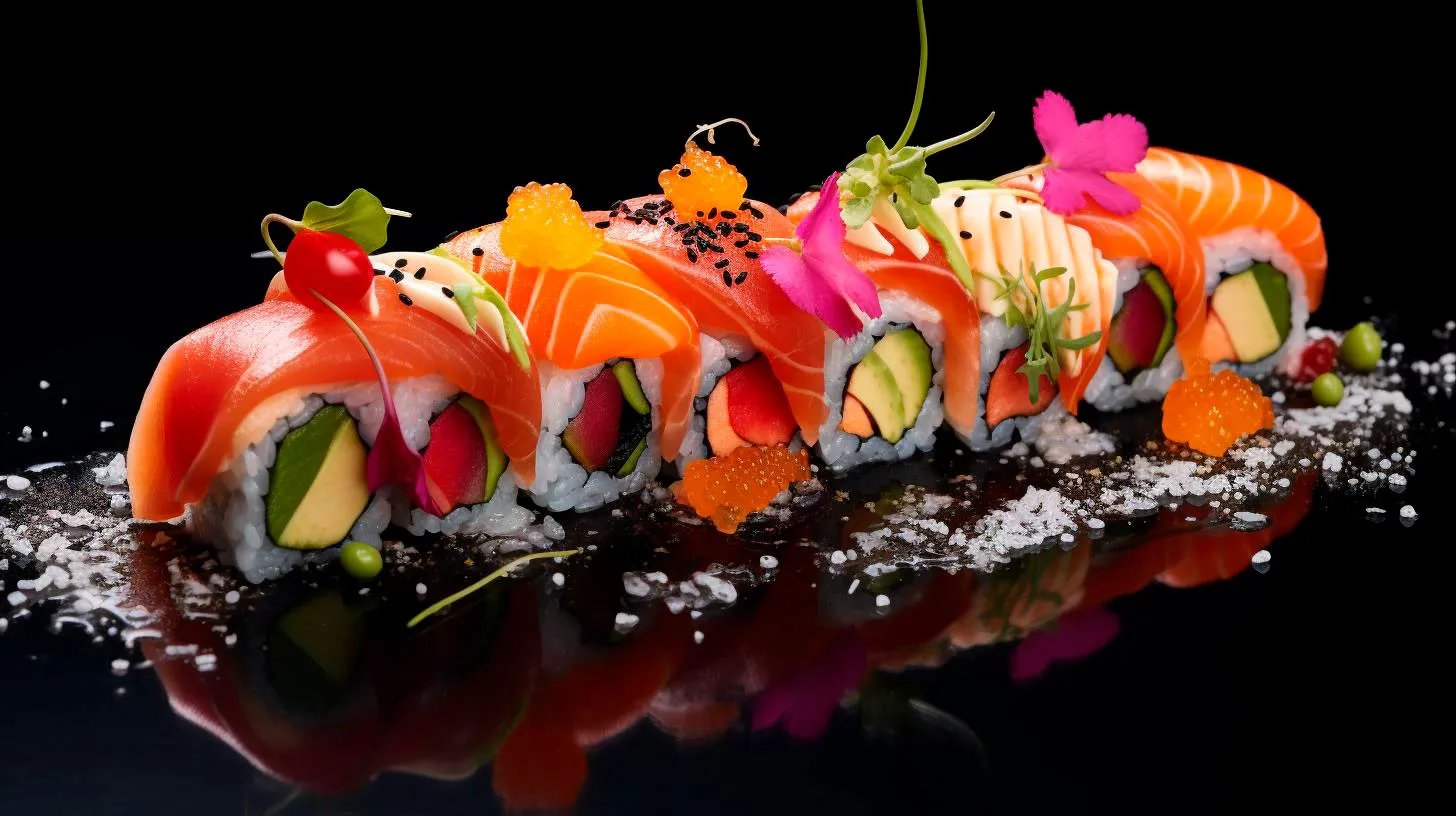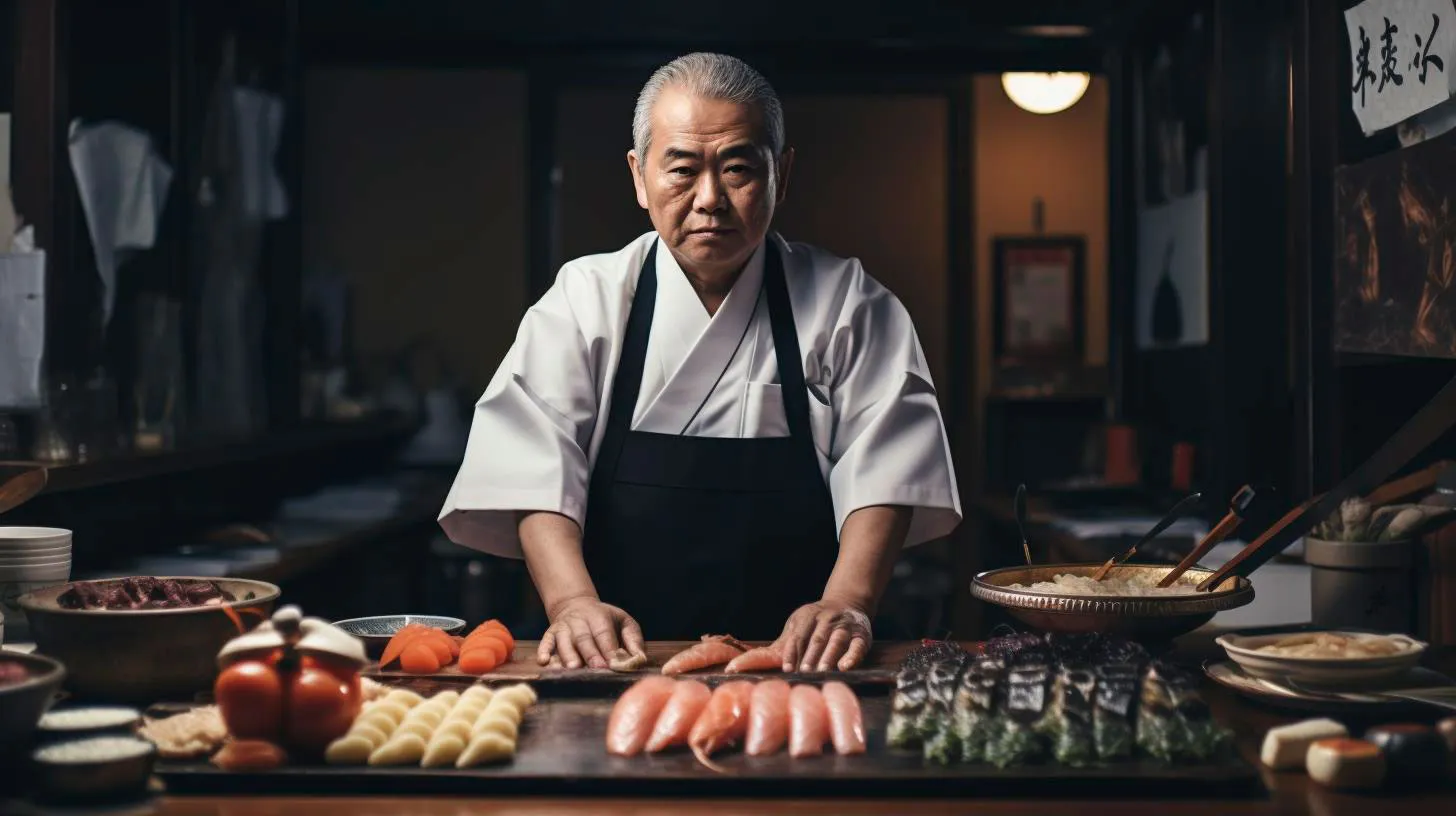Decoding Japanese Cuisine: An Exploration of Flavors and Techniques
The Essence of Japanese Cuisine
Japanese cuisine is renowned for its emphasis on freshness, balance, and presentation. It reflects the Japanese culture of simplicity, minimalism, and utmost respect for ingredients. From delicate sushi rolls to sizzling teppanyaki, each dish is meticulously prepared to ensure a harmonious blend of flavors and textures.
Here are some noteworthy features of Japanese cuisine:
- Umami: Japanese cuisine is famous for its rich umami flavors, characterized by a combination of savory, sweet, and slightly bitter tastes. This fifth basic taste is commonly found in ingredients such as soy sauce, miso paste, and seaweed.
- Seasonal Ingredients: Japanese chefs prioritize the use of fresh, seasonal ingredients in their recipes. This not only enhances the overall taste of the dish but also ensures its nutritional value.
- Presentation: Japanese cuisine elevates food presentation to an art form. Each dish is meticulously arranged to please the eyes before it delights the taste buds. Vibrant colors, elegant plating, and attention to detail are integral aspects of Japanese culinary aesthetics.
- Minimalism: Simplicity is the heart of Japanese cuisine. By using few ingredients, the true flavors of the main components shine through. This minimalist approach allows for a deeper appreciation of each element on the plate.
Key Techniques in Japanese Cuisine
The mastery of various cooking techniques forms the backbone of Japanese cuisine. Whether it’s sushi-making or teppanyaki grilling, these culinary skills are handed down through generations, making every dish a work of art.
Sushi:
Sushi is undoubtedly the most recognizable Japanese dish worldwide. Making sushi involves precise knife work, the art of rice preparation, and an understanding of the balance of flavors. Here are some key takeaways:
- Nigiri: This popular sushi style consists of a small mound of rice topped with fresh fish or other seafood. The combination of vinegared rice and the delicately sliced fish creates a heavenly dining experience.
- Maki: Maki rolls are made by wrapping rice, fish, and vegetables in a sheet of seaweed (nori). These rolls are then sliced into bite-sized pieces, allowing for a myriad of creative combinations.
- Sashimi: Sashimi showcases thinly sliced, fresh raw fish or seafood served without rice. It highlights the pure flavors of the ocean and requires exceptional knife skills to achieve the perfect cut.
Grilling Techniques:
The Japanese grilling techniques, such as teppanyaki and yakitori, add a delightful smoky flavor to ingredients, enhancing their natural taste. Key takeaways include:
- Teppanyaki: This style involves cooking ingredients, such as meat, seafood, and vegetables, on a flat iron griddle. The chef showcases their skills, entertaining guests by juggling spatulas and creating delicious dishes right in front of them.
- Yakitori: Yakitori refers to skewered grilled chicken. The savory skewers are often seasoned with a sweet or salty glaze, resulting in juicy and tender meat with a delicious charred exterior.
The Benefits of Japanese Cuisine
Japanese cuisine not only titillates the taste buds but also offers several health benefits. Its emphasis on fresh, natural ingredients and minimal use of oils and fats contribute to a well-balanced diet. Some key advantages include:
- Healthy Components: Traditional Japanese ingredients like seaweed, tofu, and fermented foods are packed with essential vitamins, minerals, and antioxidants, which promote overall well-being.
- Weight Management: The portion sizes in Japanese cuisine are generally smaller compared to other cuisines. Additionally, the focus on fresh vegetables, lean proteins, and fish make it a nutritious and satisfying choice for those watching their weight.
- Longevity: Japan is known for having one of the highest life expectancies in the world. The nutrient-dense and well-balanced nature of Japanese cuisine may contribute to the country’s longevity.
In conclusion, Japanese cuisine offers a delightful journey of flavors and culinary artistry. The perfect harmony between simplicity, balance, and presentation makes it a truly extraordinary culinary experience. Exploring the techniques and flavors of Japanese cuisine opens up a world of culinary possibilities, both for home cooks and adventurous food lovers.
So, grab your chopsticks and embark on a gastronomic adventure as you decode the secrets of Japanese cuisine!
From Hanami to Setsubun: Exploring the Cultural Significance of Japanese Festivities
These traditional celebrations offer a unique insight into the beauty and values that shape Japanese culture.
Hanami: Appreciating the Beauty of Cherry Blossoms
Every spring, when cherry blossoms paint the country in hues of pink and white, the Japanese people come together to celebrate a cherished tradition called Hanami. Literally meaning “flower viewing,” Hanami refers to the custom of admiring cherry blossoms and is an essential part of Japanese culture.
Key Takeaways:
- Hanami is a celebrated tradition in Japan where people gather to appreciate cherry blossoms.
- The cherry blossom, known as sakura in Japanese, symbolizes the transient nature of life.
- Hanami serves as an opportunity for family, friends, and colleagues to bond and enjoy the beauty of nature.
- Popular Hanami spots include parks, shrines, and historical sites throughout the country.
- Food and drinks, such as bento boxes and sake, are often enjoyed during Hanami parties.
The significance of Hanami goes beyond simply admiring the cherry blossoms. To the Japanese, these delicate flowers symbolize the ephemeral nature of life itself. Just as the blossoms bloom for a short period and eventually scatter, life, too, is transient. Hanami is a gentle reminder to cherish every moment and find beauty in simplicity.
During Hanami, people gather with their family, friends, and colleagues to celebrate under the cherry blossom trees. Popular Hanami spots are found throughout Japan, including renowned parks like Ueno Park in Tokyo, Maruyama Park in Kyoto, and Mount Yoshino in Nara. These locations attract millions of visitors each year, transforming into vibrant and picturesque havens during the blossom season.
Traditional foods and drinks also play a significant role in Hanami celebrations. Many people indulge in delicious bento boxes, consisting of a variety of colorful and flavorful dishes. Sake, a Japanese rice wine, is commonly shared among participants, fostering a joyful and festive atmosphere.
Setsubun: Driving Out Evil Spirits
Setsubun, which literally means “seasonal division,” is an annual event held on February 3rd or 4th to mark the end of winter and welcome the coming of spring. While Setsubun is celebrated in various ways throughout Japan, the most popular tradition involves “Mamemaki,” the throwing of roasted soybeans to drive away evil spirits and bring good luck.
Key Takeaways:
- Setsubun is a traditional Japanese event celebrated to mark the transition from winter to spring.
- The most prominent Setsubun activity is Mamemaki, where roasted soybeans are thrown to ward off evil spirits.
- People chant “Oni wa soto! Fuku wa uchi!” (Out with the devil! In with good fortune!) during Mamemaki.
- Another Setsubun tradition includes devouring sushi rolls called “Ehoumaki” for good luck.
- Setsubun highlights the Japanese belief in purifying one’s surroundings and welcoming positive energy.
The highlight of Setsubun is Mamemaki, which takes place at shrines, temples, and homes across Japan. Participants throw roasted soybeans either inside their residences or at designated locations while chanting “Oni wa soto! Fuku wa uchi!” meaning “Out with the devil! In with good fortune!” This ritual is believed to purify the environment and bring good luck for the year ahead.
In addition to Mamemaki, another Setsubun custom involves devouring a special type of sushi roll called “Ehoumaki.” This uncut sushi roll, filled with various ingredients such as cucumber, shrimp, egg, and eel, symbolizes good fortune. It is customary to eat the entire roll in one sitting while facing a specific lucky direction for the year.
Overall, Setsubun is a joyful celebration rooted in the belief of purifying one’s surroundings and welcoming positive energy. It is a time when families come together to drive out evil spirits and embrace the arrival of spring with renewed hope.
A Glimpse Into Japanese Traditions
Japanese festivities, such as Hanami and Setsubun, provide remarkable insights into the heart and soul of Japanese culture. These celebrations showcase the country’s appreciation for nature, the transient nature of life, and the strong belief in driving out negativity while inviting positive energy.
Whether it’s the mesmerizing beauty of cherry blossoms during Hanami or the exuberant atmosphere of Mamemaki during Setsubun, Japanese traditions offer a captivating experience that continues to intrigue and inspire people from all over the world.
Celebrating Tradition: Insights into the Rich Japanese Seasonal Festivals
In this article, we will explore some of the most captivating Japanese seasonal festivals, shedding light on their historical background, cultural importance, and key highlights.
1. Cherry Blossom Festival (Hanami)
No discussion of Japanese festivals would be complete without mentioning the iconic Cherry Blossom Festival, commonly known as Hanami. This centuries-old tradition celebrates the beauty of cherry blossoms, or “sakura,” which bloom for only a short period in spring. Here are some key features of this festival:
- Millions of people flock to popular cherry blossom spots, such as Tokyo’s Ueno Park and Kyoto’s Philosopher’s Path, to witness the breathtaking scenery.
- Picnics, music performances, and traditional tea ceremonies take place under the cherry blossoms, creating a festive atmosphere.
- Cherry blossom petals symbolize the ephemeral nature of life and are often associated with renewal and hope.
2. Gion Matsuri
Gion Matsuri is one of the most famous and largest festivals in Japan, celebrated throughout July in Kyoto. With a history dating back over a thousand years, this festival is deeply rooted in Japanese culture. Let’s take a closer look at what makes Gion Matsuri so special:
- The festival features extravagant processions known as “yamaboko junko,” where enormous floats are pulled through the streets by participants dressed in traditional attire.
- Gion Matsuri showcases Kyoto’s unique arts and crafts, including the display of traditional “mikoshi” shrines and the graceful “maiko” (apprentice geisha) performances.
- During the festival, the streets are adorned with lanterns, creating a magical ambiance that attracts millions of visitors from around the world.
3. Tanabata Festival
The Tanabata Festival, also known as the Star Festival, originated from a Chinese legend and is celebrated on July 7th each year. This joyous event celebrates the annual meeting of two celestial lovers, Orihime and Hikoboshi. Let’s explore what makes this festival so enchanting:
- Colorful paper decorations are hung along streets, in shopping arcades, and even in households to invoke good fortune and prosperity.
- Visitors can write their wishes on small pieces of paper, known as “tanzaku,” and hang them from bamboo branches.
- Tanabata festivals often feature parades, street performances, and traditional dances that showcase Japan’s artistic traditions.
4. Awa Odori Festival
Originating in Tokushima Prefecture, the Awa Odori Festival is one of Japan’s liveliest and most energetic summer events. Held during August, the festival celebrates the traditional Awa dance, known for its distinctive choreography and spirited atmosphere:
- Thousands of participants, dressed in colorful yukatas (summer kimonos), dance through the streets accompanied by traditional Japanese music and instruments such as shamisen and taiko drums.
- The festival is known for its lively and infectious atmosphere, inviting everyone to join in the dance regardless of age or skill level.
- Awa Odori attracts both locals and visitors, with over a million spectators enjoying the festive atmosphere each year.
Key Takeaways
Japanese seasonal festivals offer a unique glimpse into the country’s cultural heritage, captivating millions of people from around the world. Here are some key takeaways from this article:
- Japanese festivals like Hanami, Gion Matsuri, Tanabata, and Awa Odori showcase the country’s rich traditions and provide a deeper understanding of its cultural significance.
- The beauty and ephemeral nature of cherry blossoms are symbolized through picnics, tea ceremonies, and music performances during Hanami.
- Gion Matsuri allows visitors to witness grand processions, traditional arts, and immerse themselves in the vibrant atmosphere of Kyoto.
- Tanabata Festival offers a chance to make wishes, celebrate love, and admire dazzling paper decorations.
- Awa Odori Festival showcases the vivacious Awa dance, inviting everyone to enjoy the energetic spirit of Japan.
As you explore the captivating world of Japanese seasonal festivals, remember that the true essence of these celebrations lies in experiencing them firsthand. So, plan your trip to Japan and immerse yourself in the magic of these timeless traditions!
The Art of Sushi: Mastering Tradition and Innovation
A Brief History of Sushi
Sushi has a history spanning over a thousand years, originally emerging as a method for preserving fish in fermented rice. Over time, this ancient preservation technique evolved into something more refined and elegant. The sushi we know today started to take shape during the Edo period in Japan, when nigiri-zushi, a bite-sized mound of vinegared rice topped with fresh fish, became popular in Tokyo. Since then, sushi has undergone various transformations and assimilated influences from different regions, resulting in an array of sushi styles and variations.
The Mastery of Sushi
Creating sushi is not merely about putting ingredients together; it’s an art form that demands skill, precision, and a deep understanding of the ingredients. Sushi chefs, known as Itamae, undergo years of rigorous training to master their craft. Here are the essential elements that contribute to their mastery:
- Knife Skills: Itamae wield a sharp and specialized knife known as a Yanagi, enabling them to make precise cuts of fish and other ingredients.
- Rice Preparation: Sushi rice, properly seasoned with vinegar, salt, and sugar, is the foundation of every sushi dish. Achieving the perfect balance between flavors and achieving the ideal texture requires meticulous attention to detail.
- Fish Selection: Selecting the freshest and highest quality fish is crucial. Itamae rely on their knowledge and experience to identify the best fish available and ensure it is handled with care.
- Presentation: Sushi is not just about taste; it’s a visual delight. Itamae artfully arrange the ingredients, considering color, texture, and balance, creating a feast for the eyes.
These elements, combined with years of practice and dedication, enable sushi chefs to elevate their creations to a true culinary art.
Innovations in Sushi
While sushi is steeped in tradition, it continues to evolve and embrace innovation. Here are some key innovations revolutionizing the sushi experience:
Sushi Robots
Automation has found its way into sushi production with the introduction of sushi robots. These machines can efficiently produce perfectly shaped rice mounds, allowing chefs to focus more on the creative aspects of sushi-making.
Sustainable Sourcing
The global demand for sushi has put pressure on fish populations. To address this concern, sustainable sourcing practices have gained prominence. By sourcing fish responsibly and supporting environmentally friendly fishing methods, the sushi industry ensures the longevity of its key ingredients.
Vegetarian and Fusion Sushi
Recognizing the evolving tastes and dietary preferences of consumers, sushi chefs have introduced vegetarian and fusion sushi options. These innovative creations incorporate unconventional ingredients, catering to a broader customer base.
Interactive Sushi Experiences
Some sushi restaurants are taking the dining experience to new heights by incorporating interactive elements. From designing your sushi rolls to immersive dining experiences, technology is transforming the way we enjoy sushi.
Key Takeaways
- Sushi is an art form that combines tradition and innovation.
- Mastering sushi requires skill, precision, and deep knowledge of ingredients.
- Innovations in sushi include automation, sustainable sourcing, and fusion options.
- The perfect sushi dish is a harmonious blend of taste, texture, and visual appeal.
- The future of sushi will continue to evolve, enticing food lovers worldwide.
As sushi continues to enchant gastronomy enthusiasts worldwide, it’s a testament to the enduring appeal of this culinary masterpiece. Whether you savor traditional nigiri-zushi or explore the creative offerings of fusion sushi, each bite is an opportunity to appreciate the delicate marriage of tradition and innovation that defines the art of sushi.



